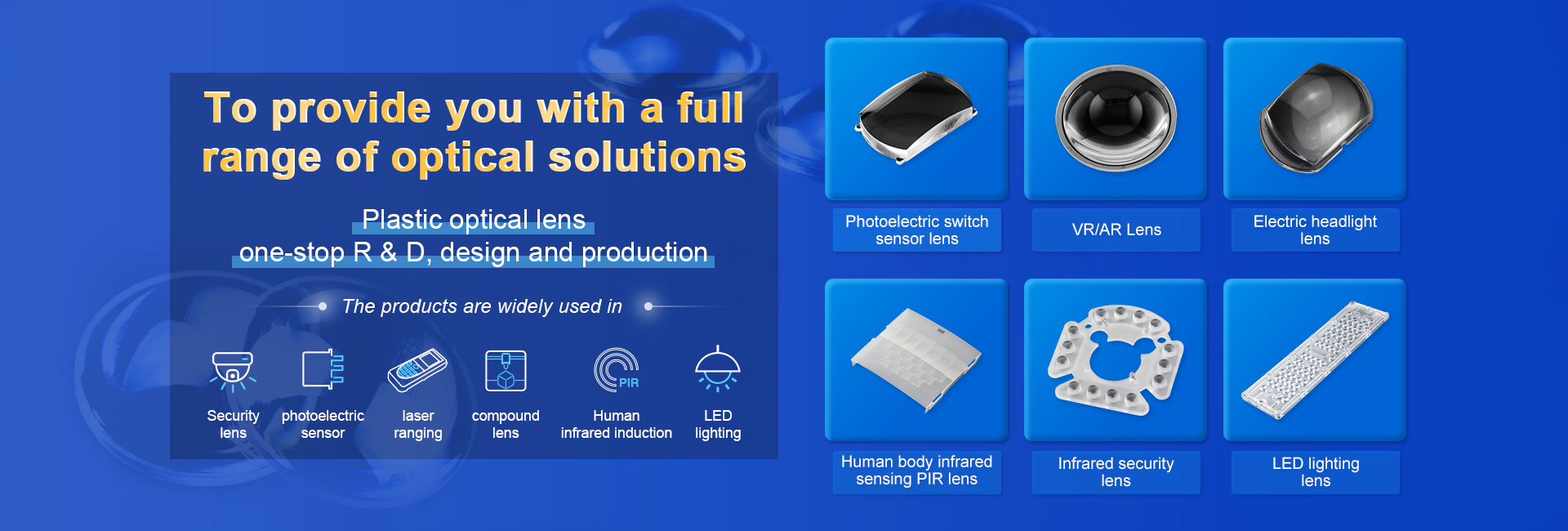Fresnel lens introduction
Time:2020-09-03 来源:Dongguan Lianlong Optoelectronic Technology Co.Ltd
The Fresnel lens, also known as the threaded lens, was invented by the French physicist Augustin Fresnel, who originally used this lens design in 1822 to build a Glass Fresnel lens system-lighthouse lens. Fresnel lenses are mostly thin sheets made of polyolefin materials, but also made of glass. One side of the lens surface is smooth, and the other side is engraved with concentric circles from small to large. Its texture is based on the use of light. The scrambler is designed according to the requirements of relative sensitivity and receiving angle. The requirements of the lens are very high. A high-quality lens must have a smooth surface and clear texture. Its thickness varies with the application, mostly about 1mm, and it is characterized by a large area. Thin thickness and long detection distance.
The idea of making a lighter and thinner lens by mounting several independent sections on a frame is often thought to have been proposed by Earl Bufeng. Kondosai (1743-1794) proposed to grind such a lens with a single piece of thin glass. The French physicist and engineer Fresnel also had high hopes for the application of this lens to lighthouses. According to the description of the Smithsonian Institution, in 1823, the first Fresnel lens was used on the Phare de Cordouan lighthouse (Phare de Cordouan) at the mouth of the Gironde; the light emitted through it can be 20 miles (32 miles). Kilometers away). The Scottish physicist Sir David Brewster is seen as the promoter of the use of this lens in the lighthouse in the UK.
3. The basic principle of Fresnel lens
Simply put, one side of the Fresnel lens is flat and the other side is convex. The Fresnel lens was first used in the early 18th century, when it was used in the searchlight of a lighthouse to focus the beam of light. When people need a thin and light lens, the plastic Fresnel lens comes in handy. Although the image quality is not as good as glass lenses, in many applications we do not need perfect image quality.
Foreign progress: Someone has developed large-scale Fresnel lenses in the world, trying to make solar concentrators. Fresnel lens is a flat condenser, light weight, relatively low price, and a bit of focus and line focus, generally made of plexiglass or other transparent plastic, but also made of glass, mainly used for concentrating solar cells Power system.
Domestic progress: my country developed Fresnel lenses for solar energy installations from the 1970s to the 1990s. Some people use molding methods to process large-area flexible and transparent plastic Fresnel lenses, while others use combined molding tools to process point-focused Fresnel lenses with a diameter of 1.5m, but the results are not satisfactory. Recently, some people use the molding method to process linear glass Fresnel lenses, but the accuracy is not enough and needs to be improved. There are also two new types of solar concentrators designed using the principle of total reflection. Although they have not yet been applied in practice, they are instructive. One is an optical fiber concentrator, which is composed of an optical fiber lens and an optical fiber connected to it. After the sunlight is focused by the optical fiber lens, it is transmitted to the place of use by the optical fiber. The other is a fluorescent concentrator, which is actually a transparent plate (generally plexiglass) added with fluorescent pigments, which can absorb the part of the sunlight that is consistent with the wavelength of the fluorescent absorption band, and then has a longer wavelength than the absorption band The emission band wavelength emits fluorescence. Due to the difference between the plate and the surrounding medium, the emitted fluorescence is guided to the edge surface of the plate by total reflection in the plate. The concentration ratio depends on the ratio of the plate area to the edge area, and can easily reach 10 to 100 times. The flat panel can absorb incident light from different directions and can also absorb scattered light, without tracking the sun.
5 Conclusion
Compared with traditional lenses, Fresnel lens has the advantages of large area, light weight, relatively low price, light and easy to carry. It is a widely used optical element, and its design and manufacture involve many technical fields, including Optical engineering, polymer material engineering, CNC machining, diamond turning process, nickel plating process; manufacturing processes such as molding, injection molding, and casting. Therefore, the design, development and production of large-scale, high-precision Fresnel lenses have become the main direction of technological development in production departments at home and abroad.



